Vyuh Feature System

This is a system level feature that is needed for all Vyuh Apps. It includes the fundamental blocks for rendering Content Items and Routes, handling Actions, branching based on Conditions and switching between different Layouts for content items.
The following sections go into details of the various elements exposed in this feature.
Content Items
Section titled “Content Items”Content Items, also known as Structured Content Blocks, represent the visual and information blocks used in an Application. These blocks can be configured on the CMS and have a visual equivalent rendered with Flutter. The default layouts are shown below. However, they are completely customizable with custom layouts.

The System feature includes core elements such as:
This is one of the most versatile content blocks in Vyuh. A card has a title,
description and image as its primary properties. It also includes a primary
action that is triggered on a tap or click. Similarly there are secondary and
tertiary actions for advanced use cases.
This represents a collection of items such as a list, carousel or other kinds of
related items that are shown together visually. It includes a title,
description and the items as its primary fields. The items field can
include an arbitrary combination of content-items and need not be homogenous.
API Content
Section titled “API Content”The block allows you to render content from a third-party API with rich
customizations on the display. It relies on a specific configuration that
represents the type of API that will be invoked along with any custom display
properties for further customizations.
Conditional
Section titled “Conditional”This allows you to use a Condition at runtime to decide the type of Content Item
to show. You can define multiple cases for the condition and their
corresponding content items.
Portable Text
Section titled “Portable Text”Renders text using the Portable Text 🔗 specification. It allows the use of custom blocks, styles and annotations for a highly customized rich text display.
Divider
Section titled “Divider”This represents a logical divider between content items. It renders as a line by default and allows separating sections of content in your page. With custom layouts you can make it as fancy as you like.
Accordion
Section titled “Accordion”This is a group of items that each have their own title and set of content
items. It renders as a set of collapsible items that can be expanded to show its
content. In the collapsed mode, only the title is shown
Video Player
Section titled “Video Player”A simple video-player that plays a video from a Network Url with an optional
title. You can control aspects such as autoplay, looping and muting the
volume.
Useful when you don’t want to show anything. It is generally used in the context of a Conditional as a content-item for the false value.
Unknown
Section titled “Unknown”This is a special type of content that is only used by the system to represent exceptional situations, especially when there is a missing type registration for an item. It is not meant to be used directly and not exposed on the CMS as well.
Routes
Section titled “Routes”Routes represent individual pages or screens of content. When creating a user journey, you would create several routes and link them together. Routes are a special kind of Content Item. The system feature includes two kinds of routes:
- Page
- Dialog
Conditional Routes
Section titled “Conditional Routes”A special type of Route that allows branching between two or more routes based on a condition. Conditions are configured on the CMS and evaluated at runtime on the App by the framework.
A simple example of a Conditional Route is one where you go to the Login Route if the user is not authenticated and straight to the Home route when already logged in.
Layouts
Section titled “Layouts”Layouts represent different ways of rendering a Content Item. Every content item can have one or more layouts along with a default layout. Following are the various layouts supported by the Content Items mentioned earlier.
- Card
- Default
- Button
- List Item
- Group
- Default
- Carousel
- Grid
- Vertical List
- Portable Text
- Default
- Accordion
- Default
- Divider
- Default
- Empty
- Default
- Unknown
- Default
- API Content
- Default
API Content is a bit special as it also supports custom API Configurations to work with any 3rd Party API. By default it includes the JSONPath-based configuration for quick testing of APIs with the ability to set endpoint urls, request-headers and do a JSONPath-based mapping to render as a single Card or a list of Cards.
Custom API Configurations can choose to talk to a specific API with more complex setup and rendering. You have complete freedom to invoke any ReST, GraphQL or a Streaming API and render it the way you please!
- Route
- Default
- Tabs
- Single Item
- Conditional Route
- Default
Actions
Section titled “Actions”Actions allows you to invoke specific operations based on certain user or system events. These could range from showing a dialog to making API calls. The following actions are built into the system feature:
- Navigate to a Url or a Route
- Navigate Back
- Show Alert
- Delay
- Open/Close Drawer
- Open/Close End-Drawer
- Open a route in a Dialog
- Open Url in a platform-specific App
- Refresh a Route
- Restart the Vyuh Application
- Show/Hide a SnackBar
- Toggle Light/Dark Themes
Conditions
Section titled “Conditions”A Condition is evaluated at runtime and results in one of many values. The conditions in the system feature are:
- Simple Boolean
- Current Platform
- Current Theme
- Feature Flag
- Current Screen Size
- User Authenticated

